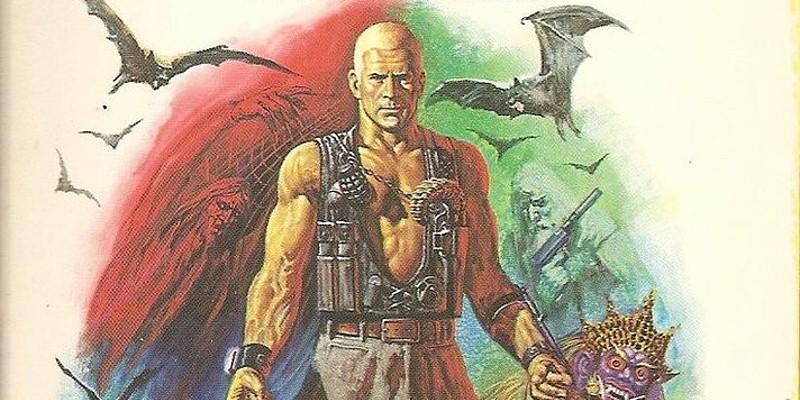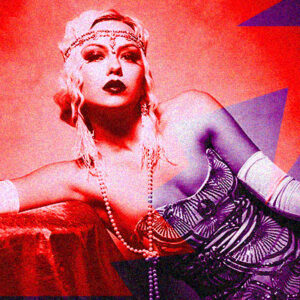In what universe are Tarzan, James Bond, pulp hero Doc Savage and legendary detectives like Sherlock Holmes, Spenser and Lord Peter Wimsey related?
In the Wold Newton Universe, and if those words leave you utterly befuddled, let me tell you about the wildest set of connections and extrapolations ever created by an acclaimed science fiction author. It’s a universe of colorful characters and their intertwined histories that continues to unfold after the writer’s death.
This universe springs not only from the mind of author Philip José Farmer but also from a real-life incident: The crash of a meteorite to Earth near the village of Wold Newton in Yorkshire, England in December 1795.
History tells us that a meteorite of the chondrite, or stony and non-metallic, type fell to Earth at about 3 in the afternoon on December 13, 1795. Several people saw it fall and it landed a few yards from a laborer named John Shipley. The impact left a crater about one yard across and the stone from outer space was embedded several inches into the ground. It weighed about 56 pounds. Edward Topham, a former soldier and journalist, owned the land where the meteorite impacted. Topham showed the meteorite publicly for a few years before it was purchased by naturalist James Sowerby and ended up in the hands of the British Museum. It may now be seen at the Natural History Museum in London and is the largest meteorite to ever fall in England.
The Wold Newton meteorite was not known to give anyone nearby special mutant powers or mysterious abilities.
Enter Philip José Farmer, who didn’t let the dry facts of the incident stand in the way of a fantastic yarn.
Vonnegut’s character got a life of his own
Even a casual student of science fiction and comic-book history knows all about meteorites. They’re either the source of superheroic powers – or agents of destruction to people with fantastic abilities. (See: Kryptonite.)
Farmer chose the former concept and, in an unmatched bit of revisionist literary history, decided to use the Wold Newton meteorite to form an interconnected world for some of imaginative literature’s most fantastic characters. Not Superman, of course, because his off-planet origin is well known. But very nearly everyone else was included, as Farmer and his successors in tending the Wold Newton Universe would have it.
Farmer, an Indiana native who died in 2009 at age 91, began publishing science fiction stories and novels in the early 1950s. He’s known for satirical and groundbreaking stories that explored sexuality and race as story and character points. He’s best known for the Riverworld novels, set on a vast planet where everyone ever born is reincarnated at the same time. (It’s been adapted into a couple of TV series.)
In “Riverworld,” Farmer showed he enjoyed mixing real (including Mark Twain and Hermann Goring) and fictional characters. Farmer became a sort of fictional character himself with a 1975 novel, “Venus on the Half-Shell,” which he published under the pseudonym Kilgore Trout. That was the name of a character, an author, created by and written about by Farmer’s fellow Hoosier Kurt Vonnegut.
I still remember when “Venus” came out. I was a Vonnegut fan and was instantly confused. Was “Venus” secretly written by Vonnegut posing as the beleaguered science fiction author he had created and included in several novels, including “Breakfast of Champions” and “Slaughterhouse-Five?”
After I read “Venus” I wondered, is this written by a great author like Vonnegut who’s posing as some kind of hack writer? It was a mind-bender – and it was apparently not amusing to Vonnegut. In 1999, Farmer wrote that Vonnegut had quickly decided to “stop me from writing sequels” to the book.
(Trout’s fame lived on. He even gets a shout-out from Salman Rushdie in his novel “The Ground Beneath Her Feet.”)
Not one to leave well enough alone, Farmer also wrote stories featuring Cordwainer Bird, a short, ill-tempered genius whose name Farmer borrowed from Cordwainer Bird, the pseudonym that author Harlan Ellison put on screenplays of his own that he disavowed because of the tampering of TV producers or other writers.
As Farmer imagined Bird, he was the nephew of pulp hero The Shadow and also a descendant of Leopold Bloom, the protagonist of James Joyce’s “Ulysses.”
But Farmer didn’t limit himself to filling in the family tree of Kilgore Trout and Cordwainer Bird.
Tarzan, Sherlock and Doc – oh my
It’s hard to explain to people today what towering pop literary figures Tarzan, the heir of English lords raised by apes in Africa, and Doc Savage, the pulp hero who inspired comic book heroes like Superman (Doc Savage had a Fortress of Solitude, for Pete’s sake), were in the late 1960s and early 1970s. That’s when paperback repackagings of their adventures showed up in drug stores and bookstores and found a ready audience among the children and grandchildren of the original readers of the tales.
Edgar Rice Burroughs’ Tarzan had long been part of 20th century pop culture, from the original books to comics versions and movies. The 1960s paperback editions of the books brought a new generation of fans to the tales (which certainly contain problematic, colonial elements). As for Doc Savage, his adventures in 1930s and 1940s pulp magazines, written by the pseudonymous Lester Dent, were a huge hit when repackaged in the 1960s and 1970s with covers by artist James Bama.
Right about the time those paperbacks hit shelves, Farmer was writing fiction about Tarzan, Sherlock Holmes and Doc Savage, sometimes thinly disguised under other names. To do this, Farmer immersed himself in the original stories featuring these characters, so it shouldn’t be a surprise when he became their biographer.
“Tarzan Alive,” published in 1972, and “Doc Savage: His Apocalyptic Life,” published in 1973, aren’t fiction. Instead they’re diligently researched catalogues of the lives of those two individuals, written as if they truly lived. Farmer exhaustively mines the original novels for recurring themes, characters, character traits, plot twists and, in the case of Clark “Doc” Savage, the super-gadgets and super entourage.
Working from the original stories about Tarzan and Doc Savage, Farmer told the “behind the scenes” stories of the characters and tales, including Doc’s offices on the 86th floor of the Empire State Building. Farmer explains contradictions that crept into the original stories, down to the minutia of the layout of the Savage offices and labs, for example.
Right about the time he was working on those two biographies, Farmer used his research to create an entire universe that meticulously connected those characters and many more, and the universe was based on just who was exposed to the Wold Newton meteorite.
Vampires and crimefighters and shared universes
Author Win Scott Eckert coined the term “Wold Newton Universe” in 1999 to wrap his head around the huge expanse of characters and worlds that sprang from Farmer’s work – and to note the ongoing additions to the universe.
As Eckert writes on a page on the Philip José Farmer website, the conceit at the center of the Wold Newton Universe is that radiation from the meteorite caused mutations in those near the crash site, causing their descendants to have “extremely high intelligence and strength, as well as an exceptional capacity and drive to perform good, or, as the case may be, evil deeds.”
Mutants, in other words, not unlike the most famous mutants in comic books and movies, the X-Men.
Besides Holmes and his nemesis Professor James Moriarty, Wimsey and Savage, the literary figures singled out by Farmer and/or elaborated upon by Eckert include adventurers like Solomon Kane, Captain Blood and the Scarlet Pimpernel, explorer Professor Challenger, criminal mastermind Fu Manchu, crimefighters and detectives including the Shadow, Nero Wolfe, Philip Marlowe, James Bond, Travis McGee and Sam Spade. In most cases, Farmer created the lines of ancestry that connected all those figures to a handful of people who were nearby when the meteorite crashed.
Over the decades, as other characters captured a place in pop culture, proponents of Farmer’s universe drew lines that connected them as well. Those include the Phantom of the Opera, Burroughs’ John Carter of Mars, experimenter Dr. Moreau, Victor Frankenstein, Zorro, the Lone Ranger and the Green Hornet (who were connected by blood in radio show scripts), Indiana Jones, Hercule Poirot, Miss Marple, Perry Mason, the classic comic character the Spirit, Robert B. Parker’s Spenser and Buffy (the Vampire Slayer) Summers.
Sometimes, particularly with Farmer’s original stories, the connections are meticulously grounded. Sometimes, particularly with the later connections, it’s just too much fun not to suggest that Spenser, for example, is connected to all these earlier characters of fearless upholders of the law with a strict moral code.
To visit the Farmer website and scroll through the character timeline is to jump feet first down the most entertaining rabbit hole ever. Here’s Dr. Pretorius, famous from “Bride of Frankenstein.” Here’s Barnabas Collins of “Dark Shadows.’ Here’s Dracula! Link after link leads to improbable stories that connect damn near every fictional character you’ve ever loved.
As I noted earlier, the Lone Ranger and the Green Hornet were masked crimefighters popular in books, radio shows and TV. At some point mid-20th century, writers for the radio shows thought it would be fun to connect the two characters, whose secret identities were last-named Reid. They decided that the Hornet, newspaper publisher Britt Reid, was the nephew of Dan Reid, the Lone Ranger.
A curious bit of extrapolation to promote the characters led to an extensive backstory that’s now been explored for decades, including as recently as 2017, when author Michael Uslan – an attorney as well as a writer who, like Kurt Vonnegut, Philip José Farmer and me, has an Indiana connection – wrote a Lone Ranger/Green Hornet comic book. (Uslan is also an executive producer of many “Batman” movies.)
Typical of the meticulousness of the Wold Newton timeline is the entry for the Ranger and Hornet. The timeline begins in 1842 with the birth of Dan Reid and continues to more or less present day.
The Wold Newton Universe is a labor of love and an obsession. It’s also funny: Eckert’s site leads to articles exploring many pop culture nooks and crannies. The 1984 film about adventurer “Buckaroo Banzai” – who is, of course, part of the bloodline – left unanswered a few questions, notably including one about a watermelon in an elaborate piece of machinery. Links on the site lead to an explanation from director W.D. Richter.
But how could Spenser, the tough Boston private eye with a heart, be related to all these historical characters? In his “Doc Savage: His Apocalyptic Life,” Farmer theorized that Raymond Chandler’s Philip Marlowe was likely connected to the meteorite timeline. Spenser’s creator, Robert B. Parker, posited his character as the modern-day equivalent of Marlowe. Parker himself explored Marlowe’s history in a couple of novels drawn from the works of author Raymond Chandler. So it’s more of a literary bloodline than a bloodline mutated by an irradiating comet. It was only a matter of time before the Wold Newton Universe connected the dots and put Spencer in appropriate literary company.
A good thing about the Wold Newton Universe is that none of it is (literally) set in stone. As Farmer himself wrote as he connected Marlowe to Doc Savage and the rest, “Readers who feel that the quality of genealogy is strained in this surmise are free to reject it.”

















